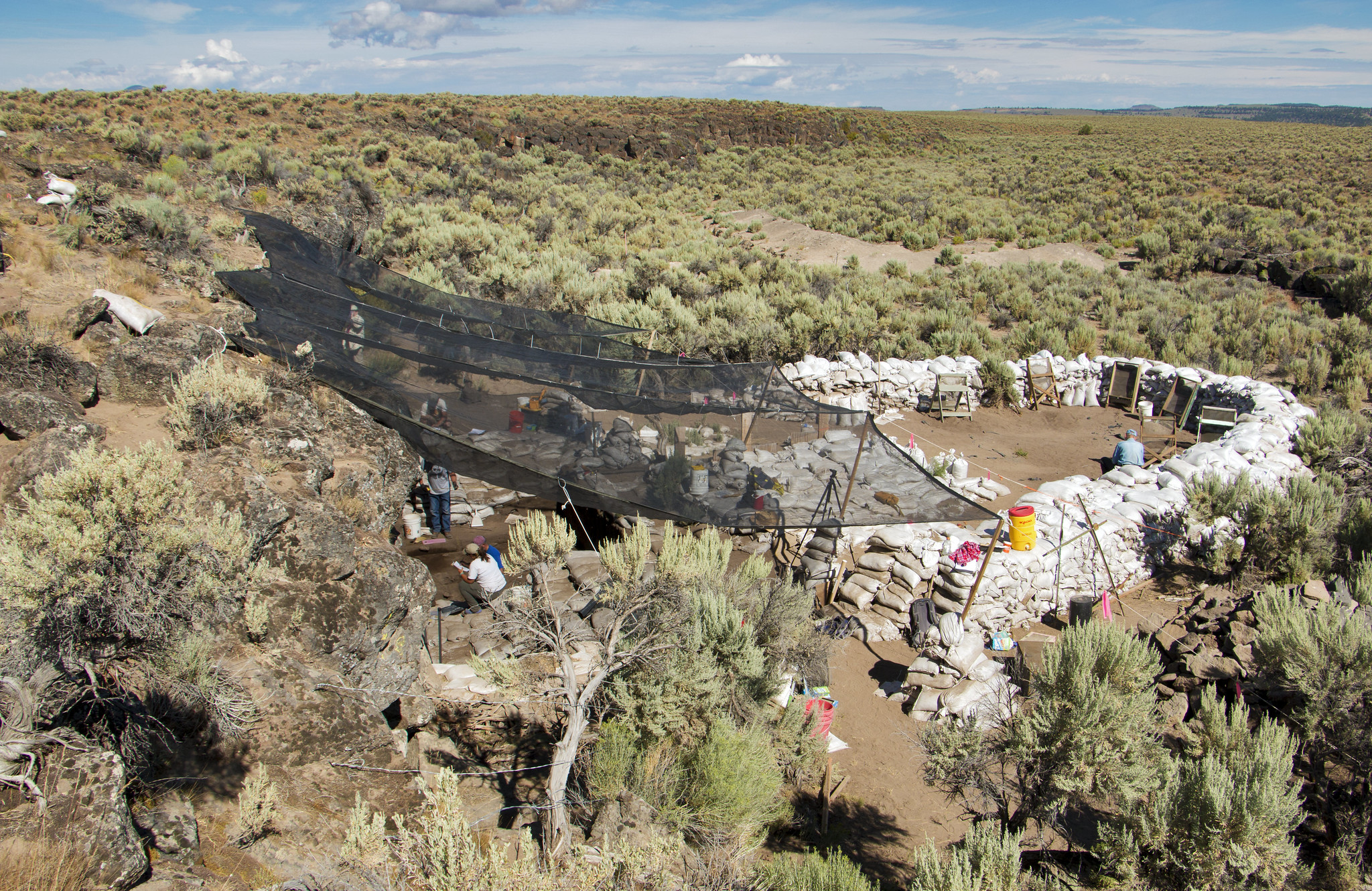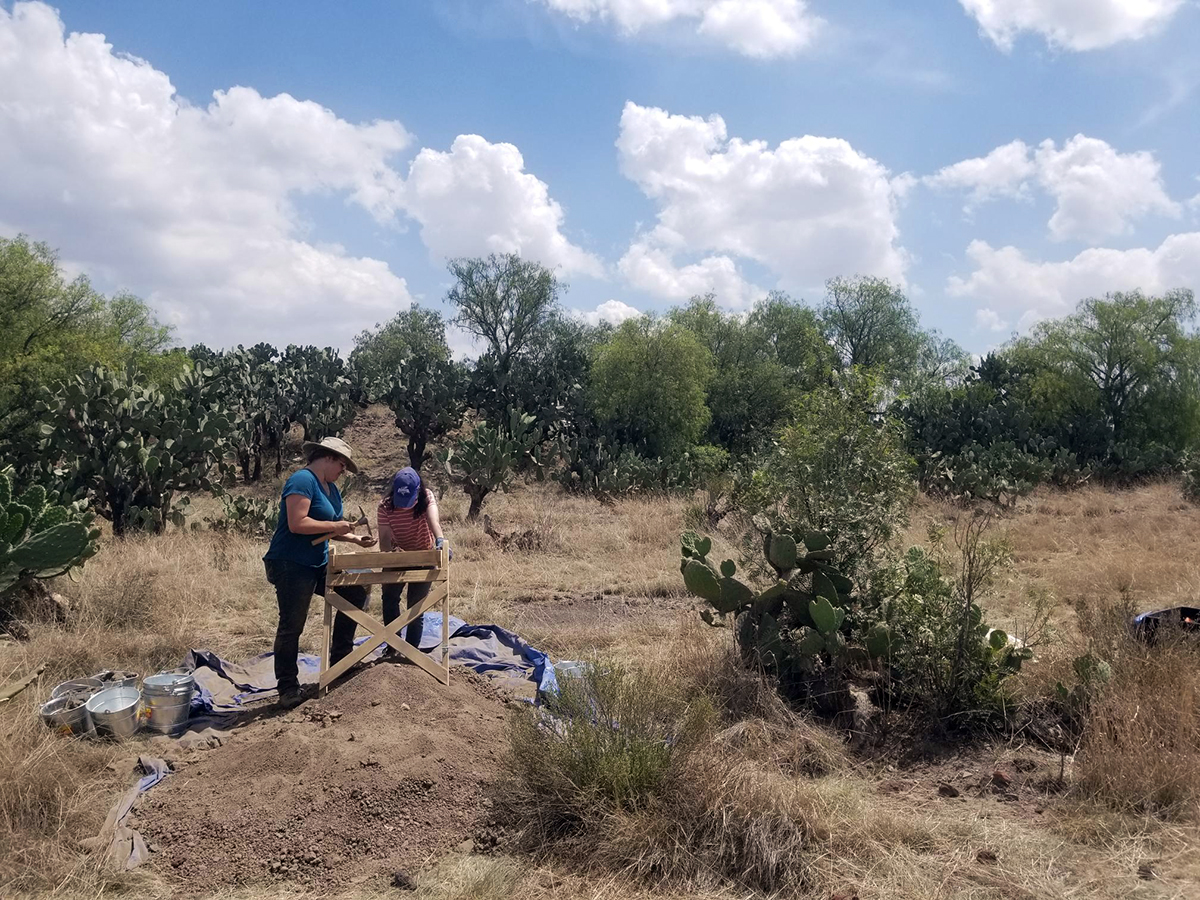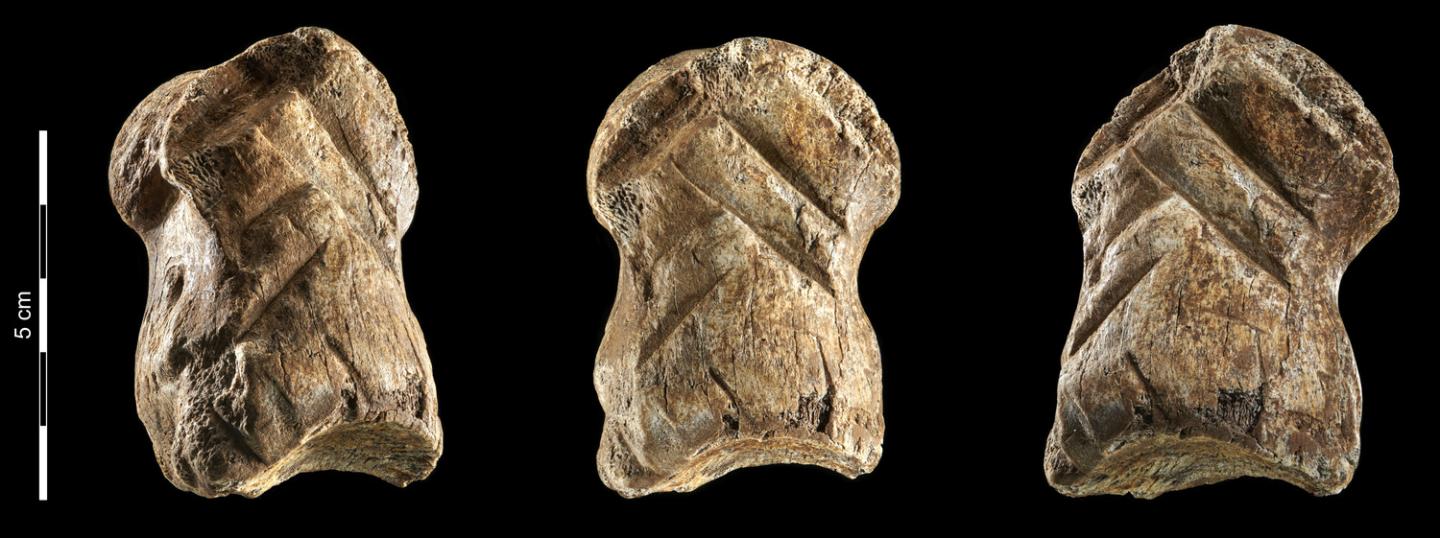A trove of ancient plant remains excavated in Kenya helps explain the history of plant farming in equatorial eastern Africa, a region long thought to be important for early farming but where scant evidence from actual physical crops has been previously uncovered.
Tag: Archaeology
New study adds to mystery of Cahokia exodus
WashU archaeologists dig into Cahokia’s history to cast doubt on a popular theory about why the ancient city was abandoned.
Researchers From UNH and Northeastern Dig into History to Uncover a “King”
Archaeologists at the University of New Hampshire along with a historian at Northeastern University believe they have unearthed the long-lost homestead of King Pompey, an enslaved African who won his freedom and later became one of the first Black property owners in colonial New England.
Easter Island’s ‘population crash’ never occurred, new research reveals
A detailed new analysis of Easter Island’s rock gardens by a research team including faculty at Binghamton University, State University of New York shows that a hypothetical “population crash” never occurred on the island.
Embargoed: Easter Island Agriculture Q&A
Join this virtual Q&A with Carl P. Lipo, PhD, Binghamton University, to discuss the upcoming embargoed paper about Easter Island agricultural and anthropology research.

Scientists Are Using Drones to Find Missing WWII Servicemen
Binghamton University Anthropology Professor Carl Lipo and Associate Professor of Geography Thomas Pingel are using the same technology used to locate Maya ruins amid the jungles of Guatemala to recreate the scene of the 1944 Battle of Guam in intricate detail, potentially leading to the recovery of missing servicemen.
Movement of crops, animals played a key role in domestication
Over the last 15 years, archaeologists have challenged outdated ideas about humans controlling nature. Writing in the Proceedings of the National Academy of Sciences, Xinyi Liu in Arts & Sciences at Washington University in St. Louis argues for a new conceptual bridge connecting the science of biological domestication to early food globalization.
Chula Geologists Find New Evidence of Historic Human Activity on Khao Phanom Rung-Khao Plai Bat, Buriram
Prof. Dr. Santi Pailoplee, Department of Geology, Faculty of Science, Chulalongkorn University, in collaboration with the Faculty of Archaeology, Silpakorn University, discovered a large number of rocks and rock formations on Khao Phanom Rung-Plai Bat, Chaloem Phra Kiat District, Buriram Province, which geologically signify human activity in the past, not natural formation.
Love and Hate in Ancient Times: New Anthology on Magical Texts Published
A team of scholars spent five years studying them: “magical” texts from Egypt that were written on papyrus, parchment, paper and shards of clay – so-called ostraca – and date from the period between the fourth and twelfth centuries AD.
Who will solve the puzzle of Bronze Age tin?
Archaeometallurgists have been debating the exact origin of tin used in the Bronze Age for 150 years. Bronze is an alloy of copper and tin, and in the Bronze Age it was used to make a range of goods including swords, helmets, bracelets, plates and pitchers.
Shipboard cannon found off the Swedish coast may be the oldest in Europe
An international research team led by maritime archaeologist Staffan von Arbin of the University of Gothenburg has studied what might be Europe’s oldest shipboard cannon. The cannon was found in the sea off Marstrand on the Swedish west coast and dates back to the 14th century.
How just one set of animal tracks can provide a wealth of information
Rock faces in Namibia are decorated with hundreds of stone-age images not only of animals and human footprints, but also of animal tracks. These have been largely neglected to date as researchers lacked the knowledge required to interpret them.

Testing Yields New Evidence of Human Occupation 18,000 years ago in Oregon
University of Oregon archaeologists have found evidence suggesting humans occupied the Rimrock Draw Rockshelter outside of Riley, Oregon more than 18,000 years ago.
Genomics and archaeology rewrite the Neolithic Revolution in the Maghreb
Cultural exchanges and interbreeding between African hunter-gatherers, Neolithic European farmers, and East-Saharan herders shaped changes in lifestyles, cultural expression and genetic makeup in the Maghreb between 5500 and 4500 BC, according to a study published today in Nature.
New study: Surprising diversity of ethnic groups in the US Virgin Islands before Columbus
When Christopher Columbus arrived at the present-day US Virgin Islands on his second voyage across the Atlantic in 1493, the islands were already inhabited – but how and when the islands of St. Croix, St. John, and St. Thomas were originally populated remains uncertain.
Chula Geologist and Team Discover New Evidence Pointing to Possible Existence of More Ancient Structures Hidden on Khao Phanom Rung
Chula geology professor and team of surveyors discovered foreign materials, suspected to be “terracotta”, in the center of Khao Phanom Rung (Phanom Rung Mountain) forest, Buriram Province. The discovery provides significant evidence indicating that Prasat Hin Phanom Rung is not the only ancient building hidden on Khao Phanom Rung.
Early crop plants were more easily ‘tamed’
Plants are capable of responding to people and have behaviors comparable to tameness, according to authors of new research that calls for a reappraisal of the process of plant domestication, based on almost a decade of observations and experiments.
“Exquisite” sabertooth skull offers clues about Ice Age predator
The recent discovery of a complete sabertooth cat skull from southwest Iowa provides the first evidence of this animal in the state. It also offers clues about an iconic Ice Age predator before the species went extinct roughly 12-13,000 years ago. Researchers believe the skull belonged to a subadult male that may have preyed on giant ground sloths.
Unique Discovery Offers Glimpse of Provincial Culture in Inka Empire
A new study co-authored by a George Washington University research professor examines the Inka Empire’s instruments of culture and control through a well-preserved article of clothing discovered in a centuries-old Chilean cemetery. Researchers excavating the burial site along Caleta Vítor…
New Book Explores the Resilience of the Ancient Maya
In his new book, The Maya and Climate Change, CSUDH Assistant Professor of Anthropology Ken Seligson explains how human-environment relationships allowed the Maya to flourish.
Thirsty wheat needed new water management strategy in ancient China
Research from Washington University in St. Louis shows that a practice of purposeful water management, or irrigation, was adopted in northern China about 4,000 years ago as part of an effort to grow new grains that had been introduced from southwest Asia. But the story gets more complex from there. Wheat and barley arrived on the scene at about the same time, but early farmers only used water management techniques for wheat.
Pioneering research directly dates the earliest milk use in prehistoric Europe
A new study has shown milk was used by the first farmers from Central Europe in the early Neolithic era around 7,400 years ago, advancing humans’ ability to gain sustenance from milk and establishing the early foundations of the dairy industry.

Search for clues may explain the collapse of ancient city in Mexico
Faculty and students from ISU joined an international team of archaeologists this summer to begin excavating one of Teotihuacan’s suburbs. The four-year project could help unlock clues about the ancient city’s mysterious collapse and what happened in the hundreds of years before Spanish conquistadors arrived in central America.
In new book, historian explores archaeologists’ and Egyptologists’ social networks
When most of us think of social networks, we think of connecting digitally with others through sites like Facebook, TikTok or Twitter. A new book by Dr. Kathleen Sheppard, an associate professor of history at Missouri University of Science and Technology, discusses a different type of social network – a physical network of archaeologists, Egyptologists, tourists and other travelers who were drawn to Egypt in the late 19th and early 20th centuries.
Study points to Armenian origins of ancient crop with aviation biofuel potential
Camelina, also known as false flax or Gold-of-Pleasure, is an ancient oilseed crop with emerging applications in the production of sustainable, low-input biofuels. Multidisciplinary research from Washington University in St. Louis is revealing the origins and uses of camelina and may help guide decisions critical to achieving its potential as a biofuel feedstock for a greener aviation industry in the future.
Research finally answers what Bronze Age daggers were used for
Analysis of Bronze Age daggers has shown that they were used for processing animal carcasses and not as non-functional symbols of identity and status, as previously thought.
Terahertz Imaging Reveals Hidden Inscription on Early Modern Funerary Cross
Using terahertz imaging and signal processing techniques to look beneath the corroded surface of a 16th-century lead funerary cross, researchers at the Georgia Institute of Technology and Georgia Tech-Lorraine revealed an inscription of the Lord’s Prayer.
Friendship ornaments from the Stone Age
As most archaeological material is found in a fragmented state, the phenomenon has been considered a natural consequence of objects’ having been long buried underground.
Life-sized camel carvings in Northern Arabia date to the Neolithic period
The monumental reliefs at the Camel Site in northern Arabia are unique: three rock spurs are decorated with naturalistic, life-sized carvings of camels and equids. In total, 21 reliefs have been identified.
New evidence supports idea that America’s first civilization was made up of ‘sophisticated’ engineers
The Native Americans who occupied the area known as Poverty Point in northern Louisiana more than 3,000 years ago long have been believed to be simple hunters and gatherers. But new Washington University in St. Louis archaeological findings paint a drastically different picture of America’s first civilization.
Prehistoric climate change repeatedly channelled human migrations across Arabia
Recent research in Arabia – a collaboration between scientists at the Max Planck Institute for the Science of Human History in Jena, Germany, the Heritage Commission of the Saudi Ministry of Culture, and many other Saudi and international researchers – has begun to document the incredibly rich prehistory of Saudi Arabia, the largest country in Southwest Asia.
Researchers identify record number of ancient elephant bone tools
Ancient humans could do some impressive things with elephant bones.
Study shows evidence of beer drinking 9,000 years ago in Southern China
Alcoholic beverages have long been known to serve an important socio-cultural function in ancient societies, including at ritual feasts.
’Til the cows come home
Meat and dairy played a more significant role in human diets in Bronze Age China than previously thought. A new analysis also suggests that farmers and herders tended to sheep and goats differently than they did their cows, unlike in other parts of the world — keeping cows closer to home and feeding them the byproducts of grains that they were growing for their own consumption, like the grass stalks from millet plants.
New York City’s Hidden Old-Growth Forests
In the popular imagination, New York City is a mass of soaring steel-frame skyscrapers. But many of the city’s 1 million buildings are not that modern.
Archaeology: Roman road discovered in the Venice lagoon
The discovery of a Roman road submerged in the Venice Lagoon is reported in Scientific Reports this week. The findings suggest that extensive settlements may have been present in the Venice Lagoon centuries before the founding of Venice began in…
Why weren’t New World rabbits domesticated?
Archaeologists find the answer in rabbit social behavior
Weizmann Institute Archaeologists: Following the Footsteps of Humankind Out of Africa
Boker Tachtit in the Negev is a crucial archaeological site for studying the spread of Homo sapiens out of Africa and the subsequent demise of Neanderthals. Using techniques so sophisticated that they can date grains of sand, Weizmann’s Prof. Elisabetta Boaretto and colleagues have shown that previous dating of the site was incorrect – and that early humans and Neanderthals cohabitated at the site.
Study highlights need to replace ‘ancestry’ in forensics with something more accurate
A new study finds forensics researchers use terms related to ancestry and race in inconsistent ways, and calls for the discipline to adopt a new approach to better account for both the fluidity of populations and how historical events have…
Resilience, not collapse: What the Easter Island myth gets wrong
BINGHAMTON, N.Y. — New research from Binghamton University, State University of New York suggests that the demographic collapse at the core of the Easter Island myth didn’t really happen. You probably know this story, or a version of it: On…
Climate changed the size of our bodies and, to some extent, our brains
The average body size of humans has fluctuated significantly over the last million years and is strongly linked to temperature. Colder, harsher climates drove the evolution of larger body sizes, while warmer climates led to smaller bodies. Brain size also…
Ancient ostrich eggshell reveals new evidence of extreme climate change thousands of years ago
Evidence from an ancient eggshell has revealed important new information about the extreme climate change faced by human early ancestors. The research shows parts of the interior of South Africa that today are dry and sparsely populated, were once wetland…
CWRU receives $1.2M W.M. Keck Foundation grant to determine ecological factors affect the evolution of our ancestors
Professor Beverly Saylor leads interdisciplinary global group applying state-of-the art technology to answer ancient questions
Ancient Islamic tombs cluster like galaxies
Statistical methods designed for cosmology reveal tomb distribution in Sudan over millennia governed by environment and social factors
New iguanodon-like dinosaur identified from jawbone fossil from Spain
New iguanodon-like dinosaur identified from jawbone fossil from Spain was likely a 6-8m long herbivore, closely related to species found in modern-day China and Niger. ### Article Title: A new Styracosternan hadrosauroid (Dinosauria: Ornithischia) from the Early Cretaceous of Portell,…

Neanderthal artists? Our ancestors decorated bones over 50,000 years ago
Since the discovery of the first fossil remains in the 19th century, the image of the Neanderthal has been one of a primitive hominin.
Scientists warn on the harmful implications of losing Indigenous and local knowledge systems
The study has been published in the Journal of Ethnobiology
Wallonia as an international reference for the timeline
Paleontologists from Univeristy of Liège (Belgium) redefine the geological boundary between the Devonian and Carboniferous periods. A Walloon site could be chosen as a world reference for this boundary.
New species of pseudo-horses living 37 million years ago
Researchers at the UPV/EHU-University of the Basque Country describe two palaeotheriidae mammals that lived in the subtropical landscape of Alava
How can ‘shark dandruff’ contribute to coral reef conservation?
For 400 million years, shark-like fishes have prowled the oceans as predators, but now humans kill 100 million sharks per year, radically disrupting ocean food chains. Based on microscopic shark scales found on fossil- and modern coral reefs in Caribbean…